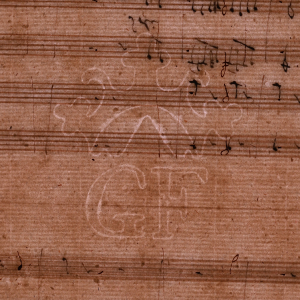- Function
-
- Composer
- Biography
Frei José de Santa Rita Marques e Silva (1782-1837) was an organist and one of the principal Portuguese composers of the first third of the nineteenth century. He was admitted to the seminary in Vila Viçosa in 1790, studying with Joaquim Cordeiro Galão (b.1762), before becoming a brother and organist of the Paulist order in Lisbon in 1800. He received instruction in counterpoint from João José Baldi, later calling himself Baldi’s disciple on the title-page of his 1820 arrangement for organ of the elder composer’s 1803 orchestral mass dedicated to Fernando Maria de Sousa Coutinho (P-Ln, F.C.R. 198//24). When in 1808, upon the death of Luciano Xavier dos Santos, Baldi was promoted to first master of the royal chapel of Bemposta, Marques e Silva became an organist there. Around 1810 he was invited to join the royal court in exile: he stayed only briefly (Vieira 1900, ii, p. 310), or, more likely, never went; dated works and autographs in P-Lf, P-Mp and P-Rp imply he was engaged more or less constantly as a composer of sacred music in Lisbon and Mafra between 1811 and 1819 (Vaz 2009, pp. 4-5).
In 1816, following the death of Baldi, he was nominated to become one of the masters of the Seminário Patriarcal and Mestre da Capela Real da Bemposta but was obstructed in doing so by the seminary Inspector, Jozé Joaquim Barba Alando de Menezes, eventually fulfilling the role of master only in 1820 after a vacancy was left by António Leal Moreira (d.1819). Several works of the 1820s were composed expressly under order from D. João VI once the court had returned to Portugal, including an 1825 mass for Mafra that was admired by the monarch according to the composer’s recollection (P-Ln, F.C.R. 198//26).
In 1831, his professional competence was again questioned by a new seminary Inspector, Joaquim Cordeiro Galão (formerly Marques e Silva’s teacher at Vila Viçosa), and on 8 March 1832, ostensibly for reasons of health, he was partially retired with his salary halved. He was eventually dismissed entirely from official duties on 23 June 1834 following the defeat of D. Miguel in the Civil War (Vaz 2009, p. 18). With the establishment of a new music conservatory (Conservatório de Música) in 1835 he was nominally engaged to teach there but seems never to have done so (Vaz 2009, pp. 20-21). In 1834, the Conde de Redondo had been ordered by D. Miguel to protect musicians who had supported the absolutist cause. Between 1834 and 1835, Marques e Silva was engaged intensively in composing sacred works for the Count’s private chapel at the Quinta do Bom Jardim, where he was effectively the composer-in-residence (Vieira, ii, p. 241). To judge from a decline in compositional output, his health became worse in 1836, and he eventually died in Lisbon in February 1837 (Vaz 2009, p. 22).
The Fundo do Conde de Redondo in P-Ln contains an exceptionally large number of Marques e Silva autographs that doubtless reflect the composer’s close association with the 15th Conde de Redondo, D. José Luis Gonzaga de Sousa Coutinho, to whom they were presumably bequeathed. His musical handwriting was fluent but it varied considerably in the formation of elements such as the G clef, the crotchet rest, and the tails of quavers and semiquavers.
José Augusto Alegria, História da Capela e Colégio dos Santos Reis de Vila Viçosa (Lisbon: Fundação Calouste Gulbenkian, 1983).
António Jorge Marques, A obra religiosa de Marcos António Portugal (1762-1830): catálogo temático, crítica de fontes e de texto, proposta de cronologia (Lisbon: Biblioteca Nacional de Portugal, 2012), p. 865.
Mariana Amélia Machado Santos, Catálogo de música manuscrita, vol. 6 (Lisbon: Biblioteca da Ajuda, Ministério da Educação Nacional, 1963).
João Vaz, ‘A obra para órgão de Fr. José Marques e Silva (1782-1837) e o fim da tradição organística portuguesa no antigo regime’, PhD thesis (Universidade de Évora, 2009).
Ernesto Vieira, Diccionario biographico de musicos portuguezes: historia e bibliographia da musica em Portugal, 2 vols. (Lisbon: Typographia Mattos Moreira & Pinheiro, 1900), ii, pp. 309-317.
Robert Stevenson, ‘Silva, José de Santa Rita Marques e [Marques, José]’, Oxford Music Online: Grove Music Online (2001), [https://doi.org/10.1093/gmo/9781561592630.article.25785].
- Source(s)
-
- P-Ln_FCR_198_03
- P-Ln_FCR_198_05
- P-Ln_FCR_198_06
- P-Ln_FCR_198_07
- P-Ln_FCR_198_08
- P-Ln_FCR_198_09
- P-Ln_FCR_198_10
- P-Ln_FCR_198_11
- P-Ln_FCR_198_12
- P-Ln_FCR_198_13
- P-Ln_FCR_198_14
- P-Ln_FCR_198_16
- P-Ln_FCR_198_17
- P-Ln_FCR_198_18
- P-Ln_FCR_198_19
- P-Ln_FCR_198_20
- P-Ln_FCR_198_21
- P-Ln_FCR_198_23
- P-Ln_FCR_198_24
- P-Ln_FCR_198_25
- P-Ln_FCR_198_26
- P-Ln_FCR_198_27
- P-Ln_FCR_198_28
- P-Ln_FCR_198_29
- P-Ln_FCR_198_30
- P-Ln_FCR_198_31_1
- P-Ln_FCR_198_32
- P-Ln_FCR_198_33
- P-Ln_FCR_198_34
- P-Ln_FCR_198_37
- P-Ln_FCR_198_38
- P-Ln_FCR_198_41
- P-Ln_FCR_198_42
- P-Ln_FCR_198_43
- P-Ln_FCR_198_47
- P-Ln_FCR_198_54
- P-Ln_FCR_198_56
- P-Ln_FCR_198_57
- P-Ln_FCR_198_58
- P-Ln_FCR_198_60
- P-Ln_FCR_198_62
- P-Ln_FCR_198_63
- P-Ln_FCR_198_64
- P-Ln_FCR_198_65
- P-Ln_FCR_198_66
- P-Ln_FCR_198_67
- P-Ln_FCR_198_68
- P-Ln_FCR_198_69
- P-Ln_FCR_198_70
- P-Ln_FCR_198_71
- P-Ln_FCR_198_73
- P-Ln_FCR_198_74
- P-Ln_FCR_198_76
- P-Ln_FCR_198_77
- P-Ln_FCR_198_78
- P-Ln_FCR_198_79
- P-Ln_FCR_198_80
- P-Ln_FCR_198_81
- P-Ln_FCR_198_85
- P-Ln_FCR_198_86
- P-Ln_FCR_198_87
- P-Ln_FCR_198_88
- P-Ln_FCR_198_89
- P-Ln_FCR_198_92
- P-Ln_FCR_198_93
- Handwriting identifiers
-
- C-Clef
-
- Type 2
- F-Clef
-
- Type 2
- G-Clef
-
- Type 1
- Type 2
- Images
-
-












































































